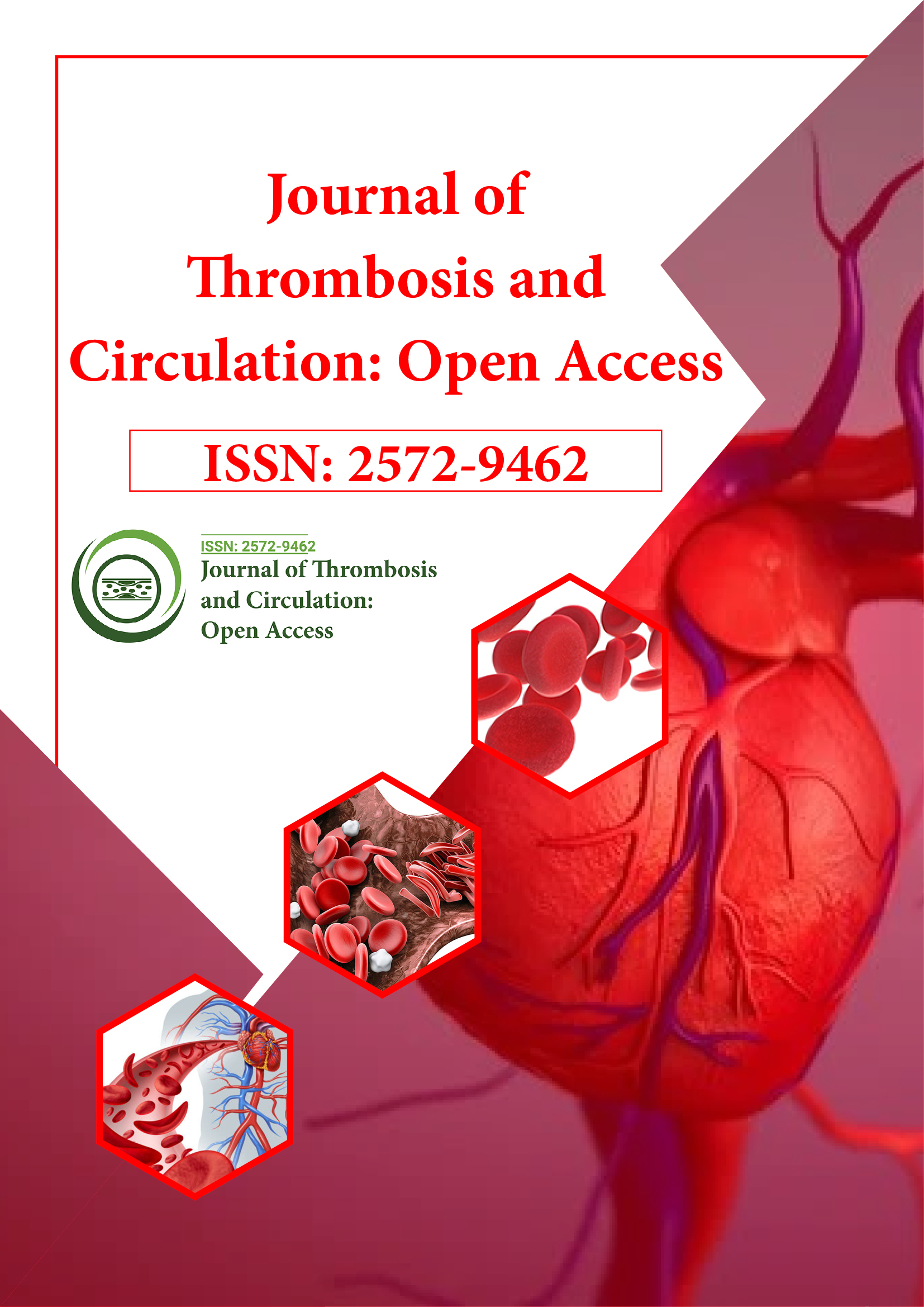Indexed In
- RefSeek
- Hamdard University
- EBSCO A-Z
- Publons
- Google Scholar
Useful Links
Share This Page
Journal Flyer

Open Access Journals
- Agri and Aquaculture
- Biochemistry
- Bioinformatics & Systems Biology
- Business & Management
- Chemistry
- Clinical Sciences
- Engineering
- Food & Nutrition
- General Science
- Genetics & Molecular Biology
- Immunology & Microbiology
- Medical Sciences
- Neuroscience & Psychology
- Nursing & Health Care
- Pharmaceutical Sciences
Commentary - (2023) Volume 9, Issue 4
Demystifying Acute Coronary Syndrome: Understanding the Causes, Symptoms, and Treatment
Borel Gastin*Received: 19-Jun-2023, Manuscript No. JTCOA-23-22270; Editor assigned: 21-Jun-2023, Pre QC No. JTCOA-23-22270 (PQ); Reviewed: 06-Jul-2023, QC No. JTCOA-23-22270; Revised: 13-Jul-2023, Manuscript No. JTCOA-23-22270 (R); Published: 21-Jul-2023, DOI: 10.35248/2572-9462.23.9.235
Description
The term Acute Coronary Syndrome (ACS) is used to refer to a number of illnesses that develop when the blood supply to the heart is suddenly reduced or blocked entirely. It is a medical emergency that requires immediate attention, as it can lead to a heart attack or other life-threatening complications.
Causes of acute coronary syndrome
Acute Coronary Syndrome usually occurs as a result of the formation of a blood clot in one of the coronary arteries, which supply oxygen-rich blood to the heart muscle. The primary causes of ACS are:
Coronary artery atherosclerosis: Atherosclerosis is the buildup of fatty deposits, cholesterol, and other substances in the arteries. When these deposits rupture, a blood clot can form, leading to reduced blood flow or complete blockage.
Coronary artery spasm: In some cases, the coronary arteries may suddenly constrict or go into spasm, leading to reduced blood flow. This can occur even in the absence of significant atherosclerosis.
Symptoms of acute coronary syndrome
The symptoms of Acute Coronary Syndrome can vary from person to person. However, a few widespread symptoms and indicators include:
Chest pain or discomfort: This is the most typical symptom of ACS. It is often described as a crushing or squeezing sensation in the chest, which may radiate to the arms, shoulders, jaw, or back.
Shortness of breath: Individuals experiencing ACS may have difficulty breathing or feel as though they cannot get enough air.
Nausea and vomiting: Some people may experience a feeling of nausea, potentially accompanied by vomiting.
Profuse sweating: Unexplained and excessive sweating, often referred to as diaphoresis, can be a symptom of ACS.
Dizziness or lightheadedness: ACS can cause a sudden drop in blood pressure, leading to dizziness or a feeling of faintness.
It is important to note that symptoms of ACS can be different in men and women, with women sometimes experiencing atypical symptoms such as fatigue, abdominal discomfort, or jaw pain. It is significant not to ignore any unusual or persistent symptoms and seek immediate medical attention.
Diagnosis and treatment of acute coronary syndrome
When a person presents with symptoms suggestive of ACS, prompt evaluation and diagnosis are essential. The following steps are typically involved:
Medical history and physical examination: A healthcare provider will inquire about the patient's symptoms, medical history, and risk factors for heart disease. A physical examination will also be performed.
Electrocardiogram (ECG): An ECG records the electrical activity of the heart and can detect abnormal patterns that may indicate ACS.
Blood tests: Blood samples are taken to measure certain enzymes and proteins that are released when the heart muscle is damaged. Elevated levels of these markers can support a diagnosis of ACS.
Imaging tests: Additional tests such as a coronary angiogram, stress test, or cardiac MRI may be performed to evaluate the extent of the blockage and assess the overall condition of the heart.
Once ACS is diagnosed, immediate treatment is initiated to restore blood flow to the heart and prevent further damage. Treatment options may include:
Medications: Medications are often administered to help dissolve blood clots, relieve pain, reduce the workload on the heart, and stabilize the patient's condition.
Angioplasty and stenting: In this procedure, a thin tube (catheter) is inserted into the blocked coronary artery, and a balloon is inflated to open the artery. To keep the artery open, a stent, a little mesh tube, is frequently implanted.
Coronary Artery Bypass Grafting (CABG): In severe cases where multiple coronary arteries are blocked, CABG may be recommended. It involves using blood vessels from other parts of the body to bypass the blocked arteries, restoring blood flow to the heart.
Prevention and Lifestyle Changes
Prevention plays a vital role in reducing the risk of ACS. Some lifestyle changes that can help prevent ACS and improve heart health include
• Sustaining a healthy weight by frequent exercise and a wellbalanced diet.
• Quitting smoking and avoiding secondhand smoke.
• Managing and controlling conditions such as high blood pressure, high cholesterol, and diabetes.
• Limiting alcohol consumption and avoiding illicit drug use.
Reducing stress through techniques like meditation, yoga, or regular physical activity. Acute Coronary Syndrome is a serious condition that requires immediate medical attention. Recognizing the symptoms, seeking prompt medical care, and adopting a heart-healthy lifestyle can help prevent ACS and improve overall cardiovascular health. By understanding the causes, symptoms, and treatment options associated with ACS, individuals can take proactive steps to protect their heart health and reduce the risk of potentially life-threatening complications.
Citation: Gastin B (2023) Demystifying Acute Coronary Syndrome: Understanding the Causes, Symptoms, and Treatment. J Thrombo Cir.9:235.
Copyright: © 2023 Gastin B. This is an open-access article distributed under the terms of the Creative Commons Attribution License, which permits unrestricted use, distribution, and reproduction in any medium, provided the original author and source are credited.
